Proton continues with its journey towards launching its own electric vehicle with the announcement of the new model’s name and a preview of the shape, following the reveal of the name of the dedicated EV brand, e.MAS.
It’s the second of many activities that will be taking place from now till the end of this year when the model is expected to be officially launched (though deliveries are likely to start in 2025).
The new model will be called the e.MAS 7, the digit indicating that there will be a series of models just like the X50, X70 and X90 range. Indeed, the e.MAS 7 will be the first of 5 models in the fully electric range that will develop in the coming years. The e.MAS 7 may be at the top – or there could be a larger e.MAS 9 as a flagship.
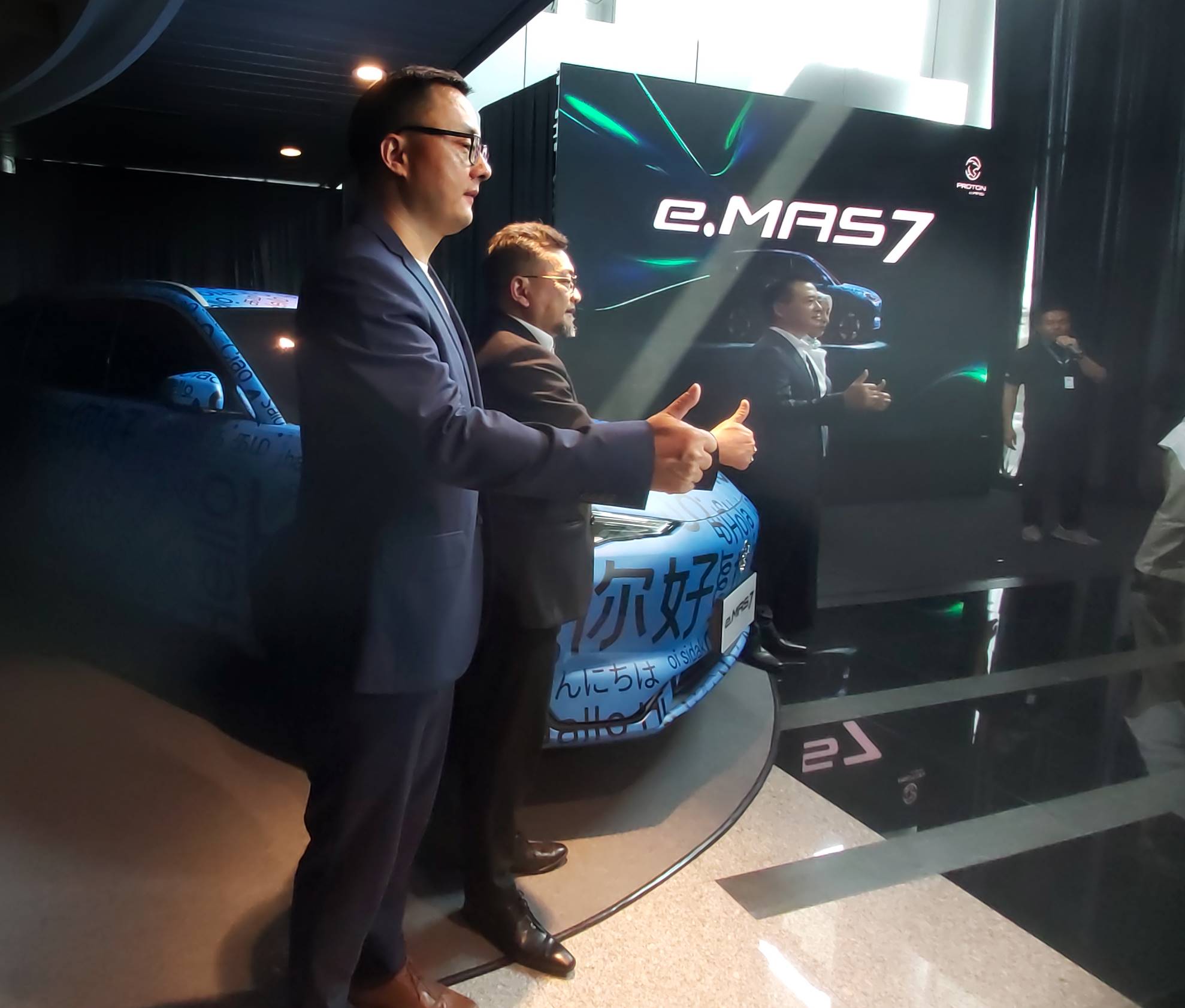
When the next models will come out will probably depend on response to the new zero-emissions vehicles, and whether demand continues to grow. As can be seen with many automakers, there has been a change in forward thinking over the past year with regard to switching to EVs.
The demand is there but the pace is not as fast as expected, and there is also the issue of continued high costs of making and selling EVs. So many of the automakers who committed to going fully EV – and even stopping combustion engine models – are now changing their positions. They are now saying that they won’t stop developing and selling EVs, but they will also continue with combustion engines, especially hybrid electric powertrains.
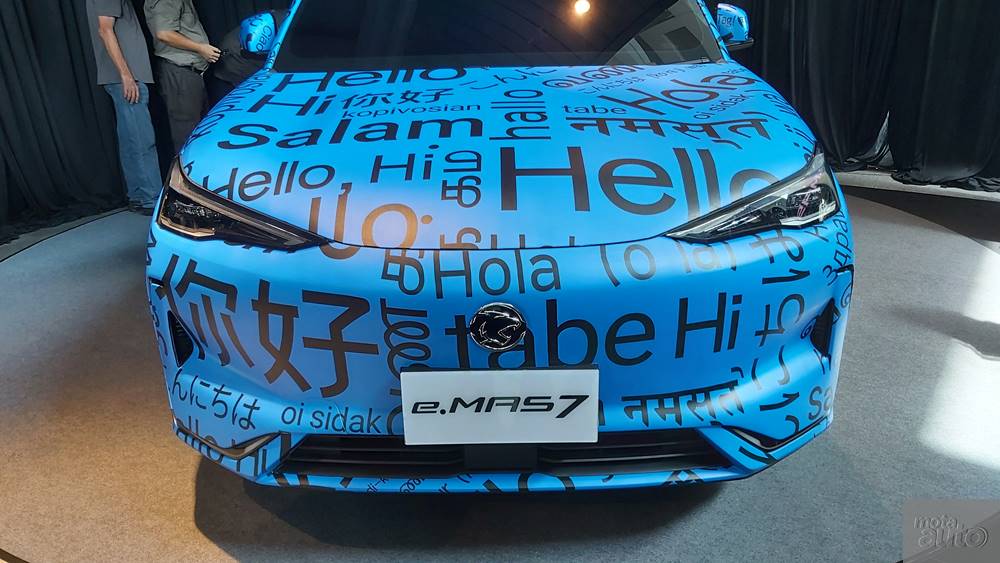
Proton has to go ahead now and at least get started since, as a Malaysian company, it has to support the government’s direction which is strongly pushing for the transition to EVs. The government is so determined to see this happening that it is offering the generous incentive of exempting EVs from duties for a few years.
Even if demand is not great in the short-term, an early start is important and useful in building up expertise and the eco-system to support EVs which will eventually take over. We can see how that early start has given China’s automakers such a huge advantage in EVs as the government began its push in 2009, formulating a policy which directed the auto industry to focus on New Energy Vehicles (NEVs) as well as provided incentives for the public to buy NEVs.
The right partner
It is therefore fortunate then that DRB-HICOM chose the Zhejiang Geely Holding Group (Geely) to be its partner in Proton in 2017. Geely has been among the leading automakers in China and also has other global brands in its group, which provides considerable resources that can be shared. For example, its tie-up with Volvo provides advanced safety technologies while owning Lotus brings the performance knowledge and experience which Proton benefited from in the 1990s when it owned the British sportscar company.

Advantage of being in a huge group
As part of this huge group, Proton also has access to the resources and in particular, the platforms that Geely has been developing. Platforms require gigantic investments which the bigger players can afford but the smaller ones cannot afford to develop frequently. So the smart thing is to tie up with a bigger automaker and share its platform.

Collaboration is common in auto industry
There are many examples of this approach and even the world’s top automakers share platforms so reduce their own costs. In some cases, there may be a joint development while in others, one company may have developed the platform and another will pay royalties to use it.
Toyota, for instance, worked with Citroen and Peugeot to use a shared platform for a model sold in Europe. Ford used to share the platform of its Ranger with Mazda but now does so with Volkswagen, while Mazda has allied with Isuzu. And way back in the 1990s, Proton used the platform of the Mitsubishi Carisma for the Waja too. Incidentally, this same platform was used for the first generation of the Volvo S40.
![Proton e.MAS E7 prototype [2024]](https://www.motaauto.com/wp-content/uploads/2024/08/Proton-e.MAS-E7-prototype-1.jpg)
Co-developed, not just a ‘rebadge’
With the e.MAS 7, its first fully electric production vehicle, Proton is emphasising that it is no mere ‘rebadge’, which is how some Malaysians perceive it to be. ‘Rebadge’ (or badge engineering) is when a company takes the model of another company and changes its brand badges and perhaps does a few cosmetic changes, but little else. It is basically buying an agreed volume of vehicles with some minor changes, that’s all.
The Geely model which has been identified as being similar to the e.MAS 7 is the Galaxy E5 which has just been launched this weekend in China. Uncommon for a model launched in China, the E5 has been developed from the start in both lefthand drive (LHD) and righthand drive (RHD) variants; normally, there is only a LHD variant as it will cater to the largest volume. A RHD variant may come later, depending on demand.
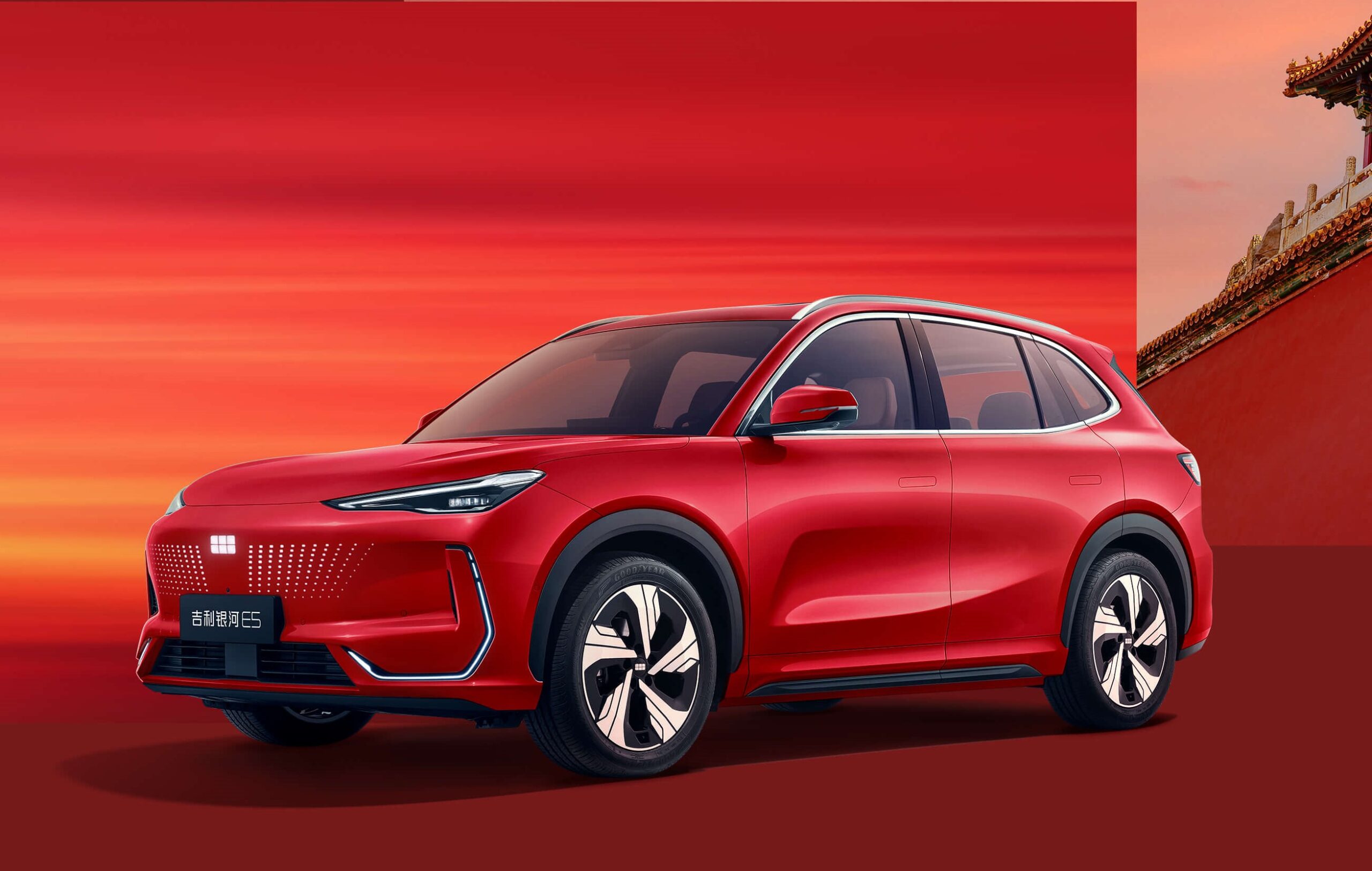
The presence of a RHD variant so soon indicates that Geely already had in mind that the new model would be sold in RHD markets, specifically in Malaysia where it has a major investment in Proton.
Thus it had Proton as a co-development partner in the project and according to Proton’s Deputy CEO, Roslan Abdullah, more than 100 Malaysian designers and engineers were involved in the project. Over 700,000 engineering man-hours have been put in as the model was being developed.
![Prototype of Proton e.MAS 7 EV [2024]](https://www.motaauto.com/wp-content/uploads/2024/08/Prototype-of-Proton-e.MAS-7-EV-2024.jpg)
The way Proton has described its involvement sounds similar to the development of the first Perodua Myvi in 2005. Though not many Malaysians are aware, Perodua was actually a partner in the project which had Daihatsu and Toyota.
The role of the many engineers who were sent to Japan may not have been great but they were influential in making sure some aspects of the Myvi (which was also sold as a Toyota Passo, Daihatsu Boon/Sirion and later, also as a Subaru Justy) were designed with Malaysians in mind.
![Perodua Myvi [2005]](https://www.motaauto.com/wp-content/uploads/2024/08/Perodua-Myvi-2005.jpg)
Of course, there were also other areas which were customised for the Malaysian market so it wasn’t a ‘rebadge’ from the start. Furthermore, working alongside the more experienced Japanese engineers was also educational, allowing them to gain experience which would increase Perodua’s in-house design capability.
![Proton e.MAS 7 EV [prototype]](https://www.motaauto.com/wp-content/uploads/2024/08/Proton-e.MAS-7-EV-prototype.jpg)
Focus on RHD variant
The same would therefore have happened with the E5 as Malaysian engineers worked alongside Chinese engineers to develop the model, perhaps with the Malaysians focussing more on the RHD variant. This is something that Geely has indicated it wants to assign to Proton, with plans to make Malaysia their RHD hub.
Other Malaysians have also been sent by PRO-NET (the Proton subsidiary dedicated to NEV models) to develop their knowledge of the EV industry and of course, there is now also a Proton R&D Centre in China.

Making the EV suitable for Malaysia
Apart from that, the Malaysian engineers would have been responsible to ensure that the vehicle can perform well in local conditions. Who would know best about the severity of potholes and flash floods than Malaysians? To ensure that the e.MAS 7 will take all that, prototypes have been driven up to 30,000 kms in durability tests and up to 100,000 kms for reliability.
Initially made in China
In the short-term, the e.MAS 7 will be made in a Geely factory in China and sent to Malaysia. Proton has a 1-year window when it can do this without having to pay duties. After 2025, the government will remove that exemption although automakers which assemble their EVs locally will get this incentive a further 2 years till the end of 2027.
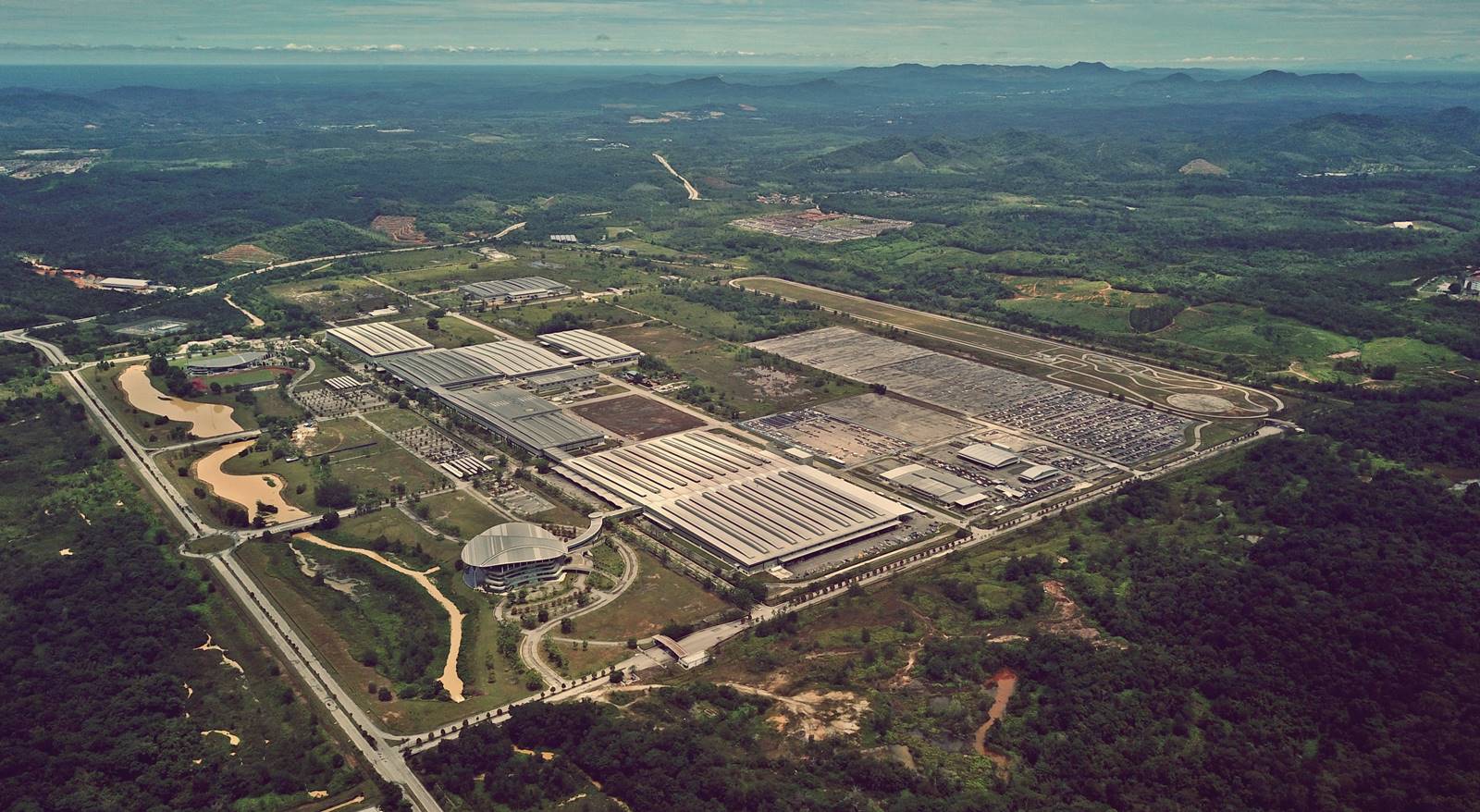
Therefore it seems likely that the e.MAS 7 and subsequent models will be made at the Tg. Malim factory in Perak, just like how it was with the X70 which started off being imported from China in CBU (completely built-up) form.
In fact, the groundwork for making EVs at the factory has already started with a MoU that was signed with smart Automobile (part of the Geely Group) to study the feasibility of assembling smart EVs. The smart EVs (jointly developed by Geely and Mercedes-Benz Design) are also marketed by PRO-NET.
If the factory is readied for making smart EVs, then it would only seem logical that the e.MAS models can be made there as well. The only thing will be the eco-system which is not developed enough for EVs. Over the 50 years it has been developing, it has been focussed on parts for vehicles with combustion engines. With EVs, things are different – perhaps more advanced – and it is known that many of the Malaysian suppliers are not fully ready.

But with the development of the Automotive High Tech Valley in Tanjung Malim to help turn Malaysia into a regional EV hub, Geely may encourage Chinese companies to set up factories in Malaysia. This is what the Japanese did earlier, bringing the suppliers from Japan to form joint-ventures locally and supply parts.
Limited information for now
There’s not much we can tell you about the e.MAS 7 at this time as Proton will be releasing information in a phased manner. We weren’t even allowed to look inside the display vehicles which, as you can see, have their exterior features camouflaged under wrap.
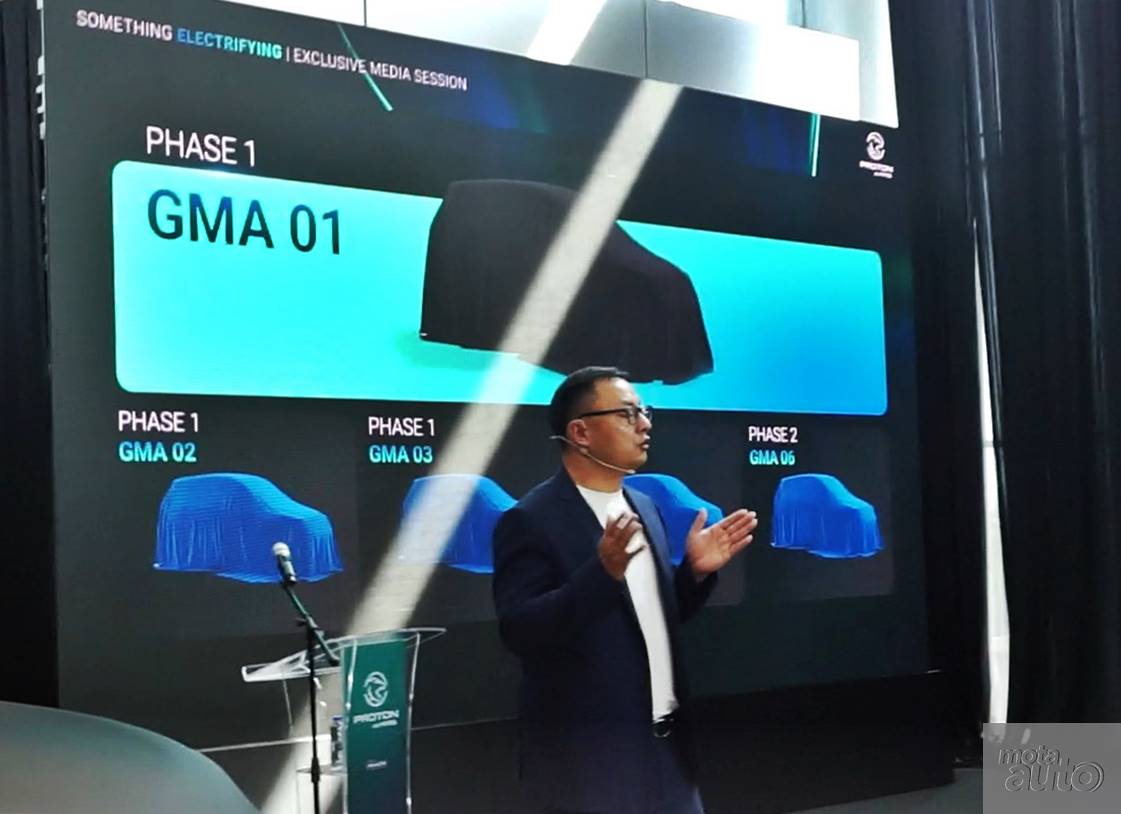
However, PRO-NET CEO Zhang Qiang did provide some general information as follows:
- A SUV for the C-segment but with D-segment spaciousness
- 4615 mm long / 2750 mm wheelbase (longer than an X70)
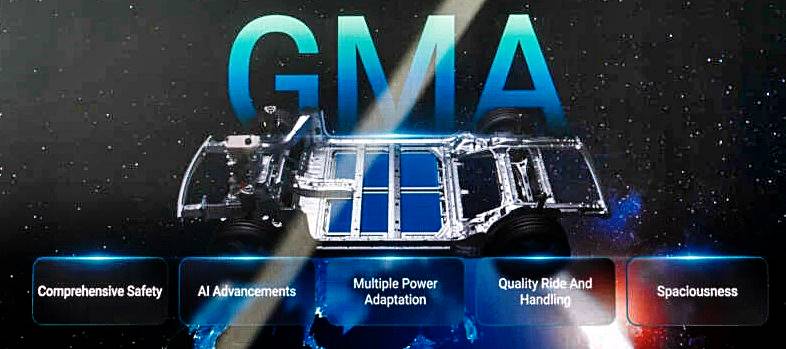
- Uses Global Modular Architecture (GMA) developed for Geely Group
- 12-in-1 Electric Drive system weighing 82.5 kgs. Energy efficiency of 90.04%, energy density of 1.94 kW/kg.
- New Generation Aegis Short Blade battery pack developed by Geely Group. Uses lithium iron phosphate (LFP) chemistry which give the battery a long lifespan and greater safety. In the Geely model, the capacities are 49.52 kWh and 60.22 kWh, with claimed ranges of 440 kms and 530 km, respectively. Cell-to-Body platform efficiently integrates the battery pack with structure.

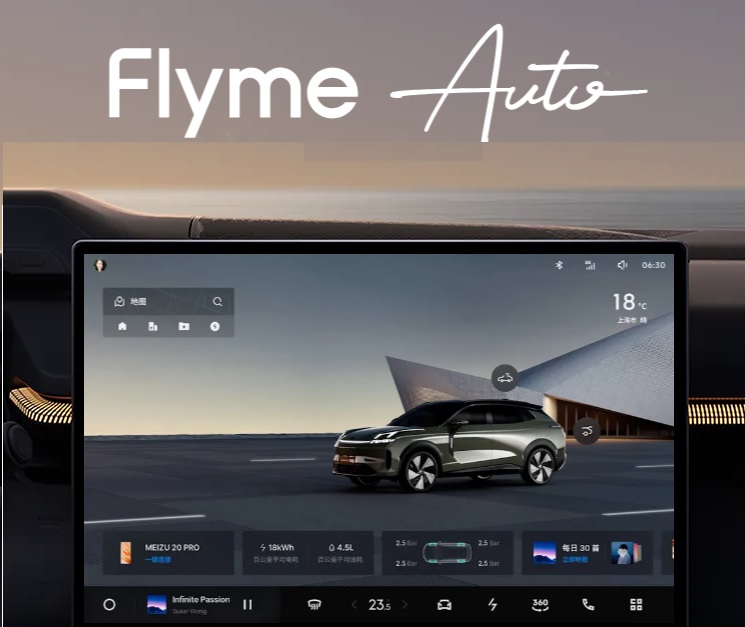
- Flyme Auto (developed with Meizu Technology) smart auto cockpit with advanced features such as 2.5k ultra high resolution, more seamless interaction experience and intelligent tailored charging map. It will use a ZNM chip which is said to have a 14-core GPU, 8-core CPU and AI computing power double that of Qualcomm’s Snapdragon 8155. The FlyMe OS is already used in Meizu smartphones on sale in Malaysia.
Stay tuned for more information which will probably be the specs and the interior.
13 years ago, Proton was already developing electric vehicles
![Proton e.MAS 7 EV [prototype]](https://www.motaauto.com/wp-content/uploads/2024/08/Proton-e.MAS-7-696x317.jpg)
